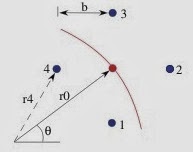 |
| www.feynmanlectures.info. |
Nearly fifty years have passed since Richard Feynman taught the introductory physics course at Caltech that gave rise to these three volumes, The Feynman Lectures on Physics. In those fifty years our understanding of the physical world has changed greatly, but The Feynman Lectures on Physics has endured. Feynman's lectures are as powerful today as when first published, thanks to Feynman's unique physics insights and pedagogy. They have been studied worldwide by novices and mature physicists alike; they have been translated into at least a dozen languages with more than 1.5 millions copies printed in the English language alone. Perhaps no other set of physics books has had such wide impact, for so long.
This New Millennium Edition ushers in a new era for The Feynman Lectures on Physics (FLP): the twenty-first century era of electronic publishing. FLP has been converted to eFLP, with the text and equations expressed in the LaTeX electronic typesetting language, and all figures redone using modern drawing software.
The consequences for the print version of this edition are not startling; it looks almost the same as the original red books that physics students have known and loved for decades. The main differences are an expanded and improved index, the correction of 885 errata found by readers over the five years since the first printing of the previous edition, and the ease of correcting errata that future readers may find. To this I shall return below.
The eBook Version of this edition, and the Enhanced Electronic Version are electronic innovations. By contrast with most eBook versions of 20th century technical books, whose equations, figures and sometimes even text become pixellated when one tries to enlarge them, the LaTeX manuscript of the New Millennium Edition makes it possible to create eBooks of the highest quality, in which all features on the page (except photographs) can be enlarged without bound and retain their precise shapes and sharpness. And the Enhanced Electronic Version, with its audio and blackboard photos from Feynman's original lectures, and its links to other resources, is an innovation that would have given Feynman great pleasure.”All three volumes of this classic text are online. There is a lot of extra stuff too, like an errata for each edition, exercises with solutions, stories from many physicists about how The Feynman Lectures influenced their careers, original course handouts, and related links. And did I mention it is available free and open to all?
Enjoy!













